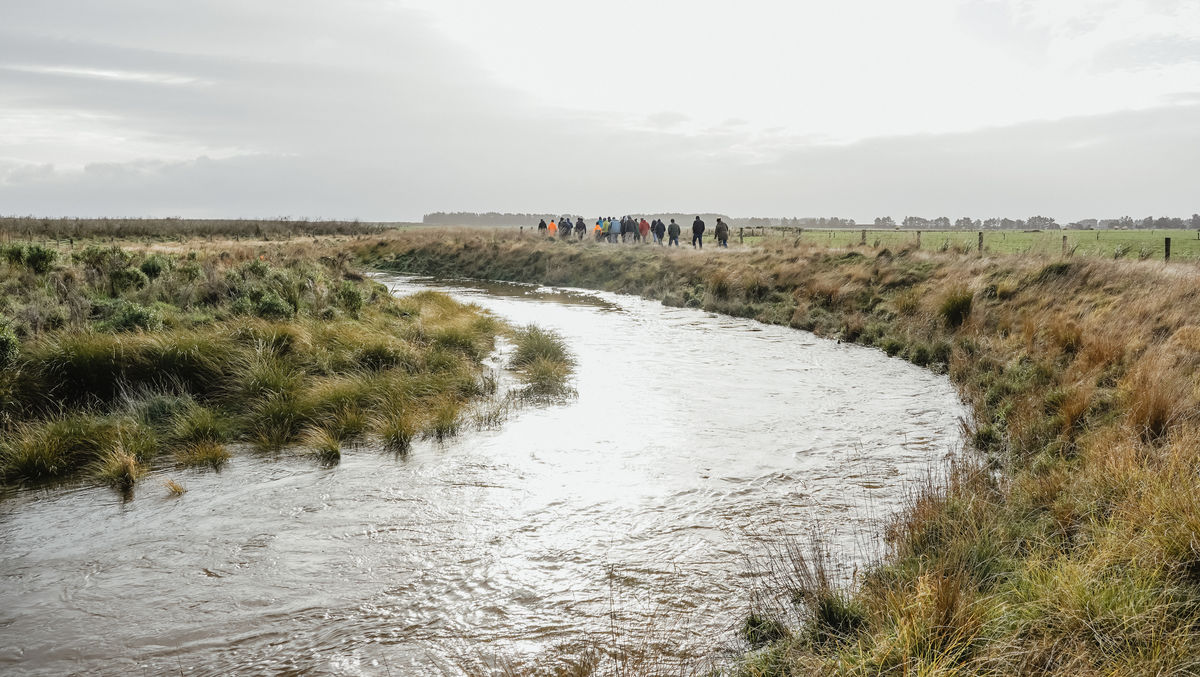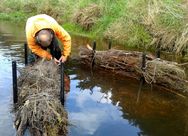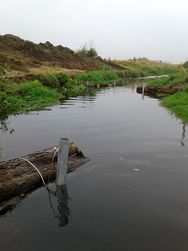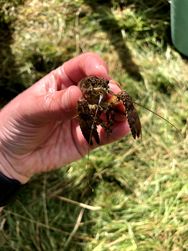
How to restore a creek – the beginners guide
What is the problem?
Southland’s Waituna Lagoon is a Ramsar Wetland of International Importance set in 3500 hectares teeming with wildlife. The lagoon is culturally significant to Ngai Tahu and a precious source of food and recreation for fishermen, hunters, and trampers.
The challenge at Waituna Lagoon is water quality. The catchment is highly productive with 45 Fonterra dairy farms surrounding the lagoon. Sediment and nutrients flow into the lagoon because the natural filters like wetlands have been drained and streams straightened and narrowed. The Waituna Creek (the principal waterway) runs through an intensively farmed catchment, and its water quality is poor. There is a marginal strip and esplanade reserve next to the creek, but these boundaries have been difficult to formalise and have been fenced often at the very top of the creek bank. This means there is almost no buffer from stock, so sediment and nutrients run straight into the creek.
To turn off the tap of contaminants running into the lagoon requires putting nature back into the landscape and farming.
What is the project?
Living Water is working with Fonterra farmers, scientists, councils, communities and Mana Whenua together because people are critical to improving water quality and biodiversity. Improving water quality involves changing people’s mindsets as much as how they farm, and successful change requires every landowner in a catchment working together in partnership with iwi, councils, and government.
The Lower Waituna Creek transformation project is a multi-phase restoration project to increase the ecological resilience of Waituna Creek while meeting community aspirations to sustain productive agriculture with effective drainage and provide recreational and cultural opportunities.
Living Water chose two 200 metre reaches (500 metres apart) within a marginal strip of land along the Waituna Creek owned by DOC to trial the stream habitat rehabilitation actions. The transformation focused on improving habitat for fish by creating flow variability in the waterway with macrocarpa logs and bundles of manuka wired and anchored into the creek bed to provide shade and hiding places for fish.
An artificial flood plain, created by re-profiling the waterway banks into a two-stage channel, spreads floodwater, slows the flow-rate and allows sediment and nutrients to drop out rather than being flushed into the lagoon downstream. Extensive riparian planting creates shade and habitat for insects that provide food for fish.


Waituna Creek Timelapse
What was done?
The bank reprofiling took place over three weeks in February 2018. Huge amounts of earth were moved, and benches were formed in the creek banks to create the two-stage channel.
Next, the logs were anchored into place. Each log was approximately three metres long and was cabled to two steel poles anchored three metres into the creek bed. With downstream structures it was important to make sure they won’t break free. Logs were placed at a 30 degree angle to the creek bed pointing upstream and butted into the stream bank as much as possible.
The manuka bundles were wired together and then anchored with warratahs into the creek bed mid-stream, some in a “V” formation to help create artificial riffles. To secure the bare creek banks a coir matting product was used and planting completed the project.
What has Living Water learnt?
There have been some fairly high flows through Waituna Creek since reprofiling and installation and to date the two-stage channel has performed perfectly for containing floodwater and slowing the flows. Fish monitoring has taken place since 2018. The 2022 fish survey was conducted during a record drought when water levels in Waituna Creek were the lowest in recorded history. This meant there was very limited natural habitat available for native fish species such as giant kōkopu. All giant kōkopu caught in the survey were found underneath or around the habitat structures that Living Water installed in the creek, which undoubtedly kept the species alive during the drought.
Reprofiling the creek into a two-stage channel enables floodwater to be safely and effectively conveyed during heavy rainfall, while the instream structures have improved the quantity of fish living in the stream. Therefore Living Water’s goals have been achieved – to improve and enhance biodiversity within the Waituna Creek, reduce sediment and run-off damaging the habitat, and ensure drainage for the productive uses of surrounding land.
The project will be extended to more of Waituna Creek.
Who could use this information?
Farmers and landowners, regional and district councils, catchment groups, river care groups, community groups, and iwi.
Links to other resources

